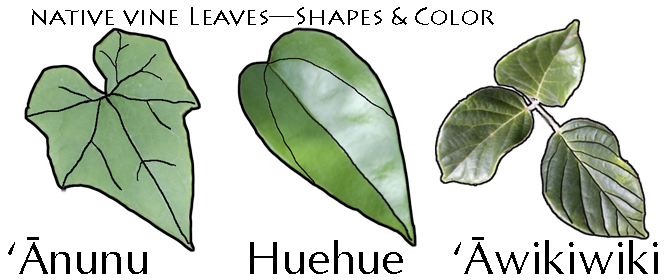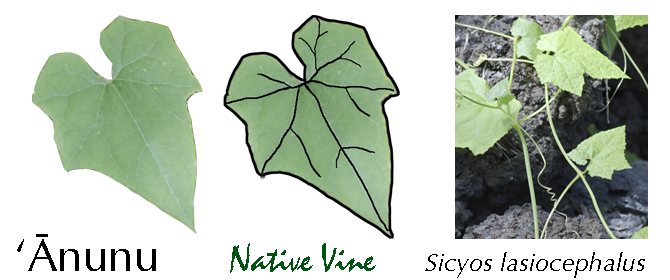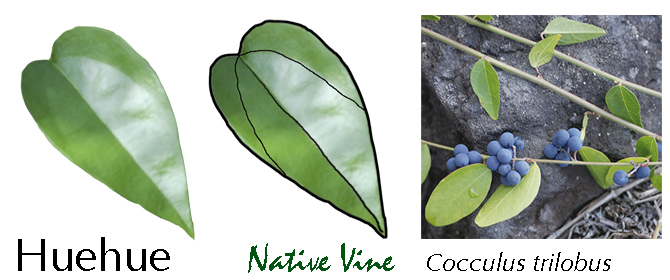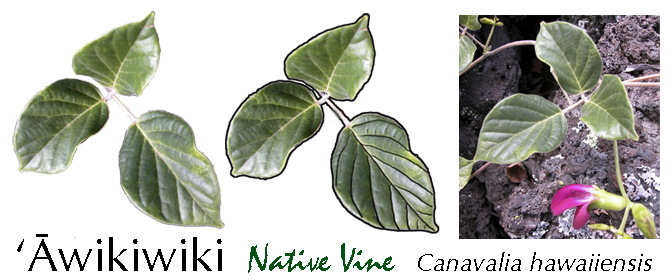Native Vines—Shapes and Colors
A healthy native forest does not look like a manicured park. There will be a mix of ground cover, shrubs and trees that vary in height. Ground cover changes in response to the seasons and rainfall. We want to encourage the growth of native ground cover that includes vines. However, many non-native species need to be weeded out, because if left alone they take over the forest and crowd out the native plants. If you are new to the forest, at first the plants might all look alike. In this activity, you will learn to start seeing the differences in plants through their leaf shapes and colors.
See if you can learn the many kinds of green—whether it is blue-green, yellow-green, fuzzy gray-green, shiny green or dull green—if so, it may help you in the forest. Before you go the forest try to learn three of our favorite vines that we DON’T pull out.
Let us introduce three native vines that can be found in forests of the Kekaha region of Hawai`i island:

We’ll show these again later in a quiz to see if you can recognize them without their names.
But first, a closer look at each individual vine.
Notice the shape.
Notice the veins.
Notice the color.

The `Ānunu is a seasonal climbing vine with a short life cycle. But during its short couple of months each year it grows so quickly that within a few weeks the trees are draped with this vine, looking as though they might choke out the forest. But no, by summer all that is left will be wisps of brown dead vines and seeds. These leaves are not shiny, and are soft and tender during their short life span.

Huehue is a beautiful vine that tends to crawl more than climb, although it will do both. Its blue fruit or seeds are distinctive when in season. Alkaloids of this plant contain toxic and repellant properties to some insects. Its wandering, climbing vines have been valued as twine for quick lashing and utilitarian devices such as funnel fish traps

`Āwikiwiki has been a favorite plant for restoration projects because of its beneficial effect on the soil by its nitrogen-fixing abilities. As the name indicates, it grows very quickly both crawling and climbing. Its flowers were used as lei more commonly in days past than it is today. Although some still enjoy its range of colors from magenta to more orange red. Notice its distinctive cluster of three leaves.
See how well you can remember these vines. Click here to take the Native Vines Quiz
